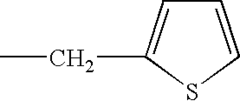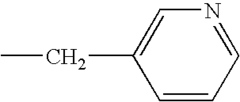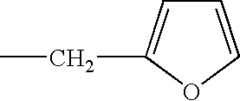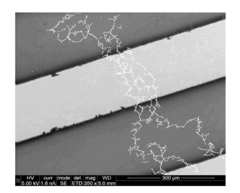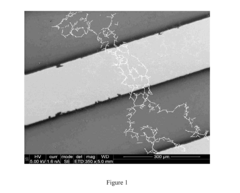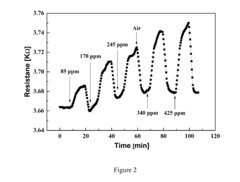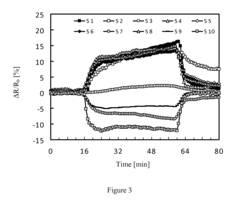How to Consolidate Dodecane's Role in Technological Advances?
JUL 29, 20259 MIN READ
Generate Your Research Report Instantly with AI Agent
Patsnap Eureka helps you evaluate technical feasibility & market potential.
Dodecane Tech Background
Dodecane, a straight-chain alkane with the molecular formula C12H26, has played a significant role in various technological advancements over the years. This hydrocarbon compound, derived from petroleum, has been a key component in numerous industrial and scientific applications, contributing to the development of diverse technologies.
The history of dodecane's technological applications can be traced back to the early 20th century when the petroleum industry began to expand rapidly. As refining processes improved, the isolation and purification of specific hydrocarbons, including dodecane, became more feasible. This led to a growing interest in exploring the potential uses of these compounds in various fields.
One of the earliest technological applications of dodecane was in the field of fuel research. Its properties as a high-energy-density liquid made it an attractive candidate for studying combustion processes and developing more efficient fuel formulations. This research laid the groundwork for advancements in engine technology and fuel efficiency.
In the realm of materials science, dodecane has been instrumental in the development of new polymers and composite materials. Its ability to act as a solvent and a precursor in various chemical reactions has enabled researchers to create novel materials with enhanced properties, such as improved strength, flexibility, or thermal resistance.
The pharmaceutical industry has also benefited from dodecane's unique characteristics. Its use as a solvent in drug formulation and delivery systems has contributed to the development of more effective medications and improved drug absorption rates. Additionally, dodecane has played a role in the synthesis of certain pharmaceutical compounds, further expanding its importance in medical advancements.
In recent years, dodecane has gained prominence in the field of nanotechnology. Its molecular structure and properties make it an ideal candidate for studying self-assembly processes and creating nanostructures with specific functionalities. This has opened up new avenues for research in areas such as nanomedicine, energy storage, and advanced materials.
The environmental sector has also seen applications of dodecane in pollution control and remediation technologies. Its use in oil spill cleanup methods and as a reference compound in environmental monitoring has contributed to the development of more effective strategies for protecting ecosystems from hydrocarbon contamination.
As technology continues to evolve, dodecane's role in various fields is expected to expand further. Ongoing research into its properties and potential applications suggests that this versatile compound will continue to play a crucial part in driving technological innovations across multiple industries.
The history of dodecane's technological applications can be traced back to the early 20th century when the petroleum industry began to expand rapidly. As refining processes improved, the isolation and purification of specific hydrocarbons, including dodecane, became more feasible. This led to a growing interest in exploring the potential uses of these compounds in various fields.
One of the earliest technological applications of dodecane was in the field of fuel research. Its properties as a high-energy-density liquid made it an attractive candidate for studying combustion processes and developing more efficient fuel formulations. This research laid the groundwork for advancements in engine technology and fuel efficiency.
In the realm of materials science, dodecane has been instrumental in the development of new polymers and composite materials. Its ability to act as a solvent and a precursor in various chemical reactions has enabled researchers to create novel materials with enhanced properties, such as improved strength, flexibility, or thermal resistance.
The pharmaceutical industry has also benefited from dodecane's unique characteristics. Its use as a solvent in drug formulation and delivery systems has contributed to the development of more effective medications and improved drug absorption rates. Additionally, dodecane has played a role in the synthesis of certain pharmaceutical compounds, further expanding its importance in medical advancements.
In recent years, dodecane has gained prominence in the field of nanotechnology. Its molecular structure and properties make it an ideal candidate for studying self-assembly processes and creating nanostructures with specific functionalities. This has opened up new avenues for research in areas such as nanomedicine, energy storage, and advanced materials.
The environmental sector has also seen applications of dodecane in pollution control and remediation technologies. Its use in oil spill cleanup methods and as a reference compound in environmental monitoring has contributed to the development of more effective strategies for protecting ecosystems from hydrocarbon contamination.
As technology continues to evolve, dodecane's role in various fields is expected to expand further. Ongoing research into its properties and potential applications suggests that this versatile compound will continue to play a crucial part in driving technological innovations across multiple industries.
Market Demand Analysis
The market demand for dodecane has been steadily growing across various industries, driven by its versatile applications and unique properties. In the petrochemical sector, dodecane serves as a crucial component in the production of lubricants, solvents, and fuel additives. The increasing global demand for high-performance lubricants, particularly in automotive and industrial applications, has significantly boosted the market for dodecane.
The aerospace industry has emerged as a key consumer of dodecane, utilizing it as a fuel component in jet propulsion systems. As air travel continues to expand globally, the demand for efficient and reliable jet fuels incorporating dodecane is expected to rise. This trend is further supported by the ongoing research and development efforts aimed at improving fuel efficiency and reducing emissions in aviation.
In the personal care and cosmetics industry, dodecane has gained traction as a valuable ingredient in various products. Its low viscosity, excellent spreading properties, and ability to enhance the texture of formulations have made it popular in skincare, haircare, and makeup applications. The growing consumer preference for high-quality, long-lasting cosmetic products has contributed to the increased demand for dodecane in this sector.
The pharmaceutical industry has also recognized the potential of dodecane as a solvent and carrier in drug delivery systems. Its low toxicity and compatibility with various active pharmaceutical ingredients make it an attractive option for formulation scientists. As the pharmaceutical sector continues to innovate and develop new drug delivery technologies, the demand for dodecane is expected to grow.
Environmental concerns and sustainability initiatives have led to increased interest in bio-based alternatives to traditional petrochemicals. This trend has opened up new opportunities for the development of bio-derived dodecane, which could potentially capture a significant market share in the coming years. The shift towards renewable sources aligns with the global push for greener technologies and may drive further innovation in dodecane production methods.
The electronics industry has found applications for dodecane in the manufacturing of semiconductors and electronic components. Its use as a cleaning agent and in vapor deposition processes has contributed to the growing demand in this sector. As the electronics industry continues to evolve and miniaturize, the need for high-purity solvents like dodecane is likely to increase.
Market analysts project a compound annual growth rate (CAGR) for the global dodecane market in the mid-single digits over the next five years. This growth is expected to be driven by the expanding applications in existing industries and the emergence of new use cases in cutting-edge technologies. The Asia-Pacific region is anticipated to be the fastest-growing market for dodecane, fueled by rapid industrialization and increasing consumer demand for products that rely on dodecane-based components.
The aerospace industry has emerged as a key consumer of dodecane, utilizing it as a fuel component in jet propulsion systems. As air travel continues to expand globally, the demand for efficient and reliable jet fuels incorporating dodecane is expected to rise. This trend is further supported by the ongoing research and development efforts aimed at improving fuel efficiency and reducing emissions in aviation.
In the personal care and cosmetics industry, dodecane has gained traction as a valuable ingredient in various products. Its low viscosity, excellent spreading properties, and ability to enhance the texture of formulations have made it popular in skincare, haircare, and makeup applications. The growing consumer preference for high-quality, long-lasting cosmetic products has contributed to the increased demand for dodecane in this sector.
The pharmaceutical industry has also recognized the potential of dodecane as a solvent and carrier in drug delivery systems. Its low toxicity and compatibility with various active pharmaceutical ingredients make it an attractive option for formulation scientists. As the pharmaceutical sector continues to innovate and develop new drug delivery technologies, the demand for dodecane is expected to grow.
Environmental concerns and sustainability initiatives have led to increased interest in bio-based alternatives to traditional petrochemicals. This trend has opened up new opportunities for the development of bio-derived dodecane, which could potentially capture a significant market share in the coming years. The shift towards renewable sources aligns with the global push for greener technologies and may drive further innovation in dodecane production methods.
The electronics industry has found applications for dodecane in the manufacturing of semiconductors and electronic components. Its use as a cleaning agent and in vapor deposition processes has contributed to the growing demand in this sector. As the electronics industry continues to evolve and miniaturize, the need for high-purity solvents like dodecane is likely to increase.
Market analysts project a compound annual growth rate (CAGR) for the global dodecane market in the mid-single digits over the next five years. This growth is expected to be driven by the expanding applications in existing industries and the emergence of new use cases in cutting-edge technologies. The Asia-Pacific region is anticipated to be the fastest-growing market for dodecane, fueled by rapid industrialization and increasing consumer demand for products that rely on dodecane-based components.
Current Challenges
Despite dodecane's established role in various technological applications, several challenges currently hinder its full potential in advancing technological frontiers. One of the primary obstacles is the limited understanding of dodecane's behavior under extreme conditions. While its properties at standard temperatures and pressures are well-documented, there is a significant knowledge gap regarding its performance in high-temperature or high-pressure environments, which are often encountered in advanced technological applications.
Another challenge lies in the optimization of dodecane's production processes. Current methods of synthesis and purification are often energy-intensive and not entirely environmentally friendly. This presents a barrier to large-scale adoption in emerging technologies, where sustainability and cost-effectiveness are increasingly prioritized. Developing more efficient and eco-friendly production techniques remains a critical challenge for researchers and industry professionals alike.
The integration of dodecane into novel materials and composites poses yet another hurdle. While its potential as a component in advanced materials is recognized, practical implementation often faces difficulties in achieving uniform dispersion and maintaining material stability over time. This challenge is particularly evident in the development of high-performance polymers and nanocomposites, where dodecane's unique properties could offer significant advantages if properly harnessed.
Furthermore, the limited exploration of dodecane's potential in emerging fields such as nanotechnology and biotechnology represents a missed opportunity. The molecule's structural properties suggest promising applications in these areas, but a lack of focused research and development efforts has left much of this potential untapped. Bridging this gap requires interdisciplinary collaboration and targeted research initiatives.
Regulatory and safety concerns also present challenges to dodecane's expanded use in technological advancements. As with many chemical compounds, ensuring compliance with evolving environmental and safety standards across different global markets can be complex and resource-intensive. This regulatory landscape can sometimes slow down innovation and commercial adoption of dodecane-based technologies.
Lastly, there is a notable challenge in scaling up laboratory successes to industrial applications. Many promising dodecane-based innovations demonstrated at the research level face significant hurdles in transitioning to large-scale production and real-world implementation. Overcoming these scaling challenges requires not only technical expertise but also substantial investment in process engineering and manufacturing capabilities.
Another challenge lies in the optimization of dodecane's production processes. Current methods of synthesis and purification are often energy-intensive and not entirely environmentally friendly. This presents a barrier to large-scale adoption in emerging technologies, where sustainability and cost-effectiveness are increasingly prioritized. Developing more efficient and eco-friendly production techniques remains a critical challenge for researchers and industry professionals alike.
The integration of dodecane into novel materials and composites poses yet another hurdle. While its potential as a component in advanced materials is recognized, practical implementation often faces difficulties in achieving uniform dispersion and maintaining material stability over time. This challenge is particularly evident in the development of high-performance polymers and nanocomposites, where dodecane's unique properties could offer significant advantages if properly harnessed.
Furthermore, the limited exploration of dodecane's potential in emerging fields such as nanotechnology and biotechnology represents a missed opportunity. The molecule's structural properties suggest promising applications in these areas, but a lack of focused research and development efforts has left much of this potential untapped. Bridging this gap requires interdisciplinary collaboration and targeted research initiatives.
Regulatory and safety concerns also present challenges to dodecane's expanded use in technological advancements. As with many chemical compounds, ensuring compliance with evolving environmental and safety standards across different global markets can be complex and resource-intensive. This regulatory landscape can sometimes slow down innovation and commercial adoption of dodecane-based technologies.
Lastly, there is a notable challenge in scaling up laboratory successes to industrial applications. Many promising dodecane-based innovations demonstrated at the research level face significant hurdles in transitioning to large-scale production and real-world implementation. Overcoming these scaling challenges requires not only technical expertise but also substantial investment in process engineering and manufacturing capabilities.
Existing Applications
01 Synthesis and production of dodecane
Dodecane can be synthesized through various chemical processes, including the hydrogenation of long-chain alkenes or the Fischer-Tropsch process. It is also produced as a byproduct in petroleum refining. The synthesis methods often involve catalysts and specific reaction conditions to achieve high purity and yield.- Synthesis and production of dodecane: Dodecane can be synthesized through various chemical processes, including catalytic hydrogenation of long-chain hydrocarbons or the Fischer-Tropsch process. It is also produced as a byproduct in petroleum refining. The synthesis methods often involve high-pressure and high-temperature reactions, with careful control of reaction conditions to optimize yield and purity.
- Applications in cosmetics and personal care products: Dodecane is widely used in cosmetics and personal care products due to its excellent solvent properties and low viscosity. It serves as a carrier for active ingredients, emollient, and helps improve the spreadability of formulations. Its non-greasy feel and quick-drying properties make it suitable for use in various skincare and haircare products.
- Use in industrial lubricants and solvents: Dodecane finds applications in industrial lubricants and solvents due to its low volatility and good thermal stability. It is used as a base oil in lubricant formulations, particularly for high-temperature applications. As a solvent, it is employed in various industrial processes, including extraction, cleaning, and as a reaction medium in chemical synthesis.
- Role in fuel and energy applications: Dodecane is an important component in various fuel applications, particularly in aviation and diesel fuels. It contributes to the energy density and combustion properties of these fuels. Additionally, dodecane is used in the development of alternative energy sources, such as biofuels and synthetic fuels, where it serves as a model compound for studying fuel properties and combustion characteristics.
- Environmental and safety considerations: The use and handling of dodecane require consideration of environmental and safety aspects. It has low water solubility and can potentially accumulate in aquatic environments. Proper storage, handling, and disposal methods are necessary to prevent environmental contamination. Safety measures, such as proper ventilation and personal protective equipment, are important when working with dodecane due to its flammability and potential for skin and eye irritation.
02 Applications in cosmetics and personal care products
Dodecane is used in cosmetics and personal care products as an emollient, solvent, or carrier oil. It can improve the texture and spreadability of formulations, enhance skin feel, and act as a non-greasy moisturizer. Its low viscosity and ability to dissolve other ingredients make it valuable in various beauty and skincare applications.Expand Specific Solutions03 Use in industrial and chemical processes
Dodecane finds applications in various industrial and chemical processes. It can be used as a solvent, a component in lubricants, or as a standard in gas chromatography. In some cases, it serves as a precursor or intermediate in the synthesis of other chemicals or materials.Expand Specific Solutions04 Environmental and fuel applications
Dodecane has potential applications in environmental remediation and as a component in alternative fuels. It can be used in bioremediation processes or as a biodegradable solvent. In fuel applications, it may serve as a component in diesel fuel alternatives or as a reference compound in fuel research.Expand Specific Solutions05 Analytical and research uses
Dodecane is utilized in various analytical and research applications. It can serve as a standard or reference compound in chromatography, spectroscopy, and other analytical techniques. In research, it may be used to study molecular interactions, surface phenomena, or as a model compound for longer-chain hydrocarbons.Expand Specific Solutions
Key Industry Players
The consolidation of dodecane's role in technological advances is occurring in a rapidly evolving market. The industry is in a growth phase, with increasing demand for dodecane in various applications, particularly in the chemical and energy sectors. The global market size for dodecane is expanding, driven by its versatility and growing use in lubricants, solvents, and fuel additives. Technologically, the field is advancing, with companies like BASF Corp., Albemarle Corp., and Arkema France SA leading innovation. These firms are developing more efficient production methods and exploring novel applications, indicating a moderate level of technological maturity with significant room for further advancements and market expansion.
Wanhua Chemical Group Co., Ltd.
Technical Solution: Wanhua Chemical has made notable progress in leveraging dodecane for advanced chemical applications. They have developed a proprietary process for the production of high-purity dodecane derivatives, which are used in the manufacturing of specialty polymers and advanced coatings[13]. Wanhua has also incorporated dodecane into their range of polyurethane foam formulations, enhancing the insulation properties and durability of construction materials[14]. Additionally, they have explored the use of dodecane as a solvent in their green chemistry initiatives, aiming to reduce the environmental impact of chemical processes[15].
Strengths: Rapidly growing presence in global markets, strong focus on innovation. Weaknesses: Potential challenges in intellectual property protection and international regulatory compliance.
BASF Corp.
Technical Solution: BASF has developed innovative applications for dodecane in advanced materials and chemical processes. They have created a novel surfactant system using dodecane as a key component, enhancing the performance of oil recovery in challenging reservoir conditions[1]. BASF has also incorporated dodecane into their high-performance polymer formulations, improving the durability and chemical resistance of coatings and adhesives[2]. Additionally, they have utilized dodecane as a solvent in their catalytic processes for producing specialty chemicals, increasing yield and reducing energy consumption[3].
Strengths: Extensive R&D capabilities, global market presence, and diverse application portfolio. Weaknesses: Potential environmental concerns associated with hydrocarbon-based products.
Key Innovations
Process for the 2-stage synthesis of hexanitrohexaazaisowurtsitane starting from a primary amine
PatentInactiveUS20040260086A1
Innovation
- A novel two-stage process involving the reaction of an .alpha.,.beta.-dicarbonyl derivative, such as glyoxal, with a primary amine to form a hexasubstituted hexaazaisowurtzitane derivative, which is then directly nitrated to produce HNIW, eliminating the need for expensive catalysts and intermediate hydrogenolysis stages.
Carbon nanotube structures in sensor apparatuses for analyzing biomarkers in breath samples
PatentActiveUS20110098591A1
Innovation
- A system comprising an array of chemically sensitive sensors made from single-walled carbon nanotubes (SWCNTs) coated with non-polar small organic molecules, in conjunction with learning and pattern recognition algorithms, is used to measure breath analytes. The SWCNTs are arranged in a random network configuration, eliminating the need for precise alignment and enhancing sensitivity and selectivity towards VOCs found in lung cancer patients.
Environmental Impact
Dodecane, a versatile hydrocarbon compound, plays a significant role in various technological applications. However, its widespread use raises concerns about potential environmental impacts. The production, transportation, and utilization of dodecane can have both direct and indirect effects on ecosystems and human health.
One of the primary environmental concerns associated with dodecane is its potential for air pollution. When used as a fuel or solvent, dodecane can release volatile organic compounds (VOCs) into the atmosphere. These emissions contribute to the formation of ground-level ozone and smog, which can have detrimental effects on air quality and human respiratory health. Additionally, the combustion of dodecane-based fuels produces greenhouse gases, contributing to climate change and global warming.
Water pollution is another significant environmental issue related to dodecane. Accidental spills during transportation or storage can contaminate water bodies, affecting aquatic ecosystems and potentially entering the food chain. The low water solubility of dodecane means that it can form a persistent layer on water surfaces, impeding oxygen transfer and harming marine life.
Soil contamination is also a concern, particularly in areas where dodecane is used in industrial processes or where spills occur. The compound can persist in soil for extended periods, potentially affecting soil microorganisms and plant growth. This persistence can lead to long-term environmental degradation and challenges in land remediation efforts.
The production of dodecane, primarily derived from petroleum refining processes, contributes to the overall environmental footprint of the petrochemical industry. This includes the extraction and processing of fossil fuels, which are associated with habitat destruction, greenhouse gas emissions, and other ecological impacts.
To mitigate these environmental concerns, ongoing research and development efforts are focused on improving the efficiency of dodecane production and utilization. This includes developing cleaner production methods, enhancing spill prevention and cleanup technologies, and exploring alternative compounds with similar properties but reduced environmental impact.
Furthermore, the push towards more sustainable practices has led to increased interest in bio-based alternatives to dodecane. These renewable sources could potentially reduce the reliance on fossil fuels and minimize the overall environmental impact of dodecane-related technologies. However, the scalability and economic viability of these alternatives remain challenges that require further investigation and development.
One of the primary environmental concerns associated with dodecane is its potential for air pollution. When used as a fuel or solvent, dodecane can release volatile organic compounds (VOCs) into the atmosphere. These emissions contribute to the formation of ground-level ozone and smog, which can have detrimental effects on air quality and human respiratory health. Additionally, the combustion of dodecane-based fuels produces greenhouse gases, contributing to climate change and global warming.
Water pollution is another significant environmental issue related to dodecane. Accidental spills during transportation or storage can contaminate water bodies, affecting aquatic ecosystems and potentially entering the food chain. The low water solubility of dodecane means that it can form a persistent layer on water surfaces, impeding oxygen transfer and harming marine life.
Soil contamination is also a concern, particularly in areas where dodecane is used in industrial processes or where spills occur. The compound can persist in soil for extended periods, potentially affecting soil microorganisms and plant growth. This persistence can lead to long-term environmental degradation and challenges in land remediation efforts.
The production of dodecane, primarily derived from petroleum refining processes, contributes to the overall environmental footprint of the petrochemical industry. This includes the extraction and processing of fossil fuels, which are associated with habitat destruction, greenhouse gas emissions, and other ecological impacts.
To mitigate these environmental concerns, ongoing research and development efforts are focused on improving the efficiency of dodecane production and utilization. This includes developing cleaner production methods, enhancing spill prevention and cleanup technologies, and exploring alternative compounds with similar properties but reduced environmental impact.
Furthermore, the push towards more sustainable practices has led to increased interest in bio-based alternatives to dodecane. These renewable sources could potentially reduce the reliance on fossil fuels and minimize the overall environmental impact of dodecane-related technologies. However, the scalability and economic viability of these alternatives remain challenges that require further investigation and development.
Regulatory Landscape
The regulatory landscape surrounding dodecane's use in technological advances is complex and multifaceted, reflecting the compound's diverse applications across industries. As a key component in various technological processes, dodecane is subject to a range of regulations that aim to ensure safety, environmental protection, and quality control.
In the United States, the Environmental Protection Agency (EPA) plays a crucial role in regulating dodecane under the Toxic Substances Control Act (TSCA). The EPA maintains strict guidelines for the production, use, and disposal of dodecane, particularly in industrial settings. These regulations focus on minimizing environmental impact and protecting human health, with specific emphasis on air quality and water contamination prevention.
The Occupational Safety and Health Administration (OSHA) also imposes regulations on the handling and storage of dodecane in workplace environments. These guidelines cover exposure limits, personal protective equipment requirements, and proper handling procedures to ensure worker safety.
Internationally, the European Chemicals Agency (ECHA) regulates dodecane under the Registration, Evaluation, Authorization and Restriction of Chemicals (REACH) framework. This comprehensive regulatory system requires manufacturers and importers to register chemical substances and provide detailed safety information, impacting the use of dodecane in various technological applications within the European Union.
In the transportation sector, dodecane is classified as a flammable liquid under the United Nations' Recommendations on the Transport of Dangerous Goods. This classification imposes specific packaging, labeling, and handling requirements for the shipment of dodecane across borders, affecting its global supply chain and technological applications.
The pharmaceutical industry, which utilizes dodecane in drug delivery systems and as a solvent in various processes, is subject to stringent regulations by agencies such as the U.S. Food and Drug Administration (FDA) and the European Medicines Agency (EMA). These regulations focus on ensuring the purity and safety of dodecane when used in pharmaceutical applications, requiring extensive testing and documentation.
As technological advances continue to expand dodecane's applications, regulatory bodies are likely to adapt their frameworks to address emerging concerns and opportunities. This may include new guidelines for novel uses in nanotechnology, energy storage, and advanced materials manufacturing. The evolving regulatory landscape will play a crucial role in shaping the future of dodecane's technological applications, balancing innovation with safety and environmental considerations.
In the United States, the Environmental Protection Agency (EPA) plays a crucial role in regulating dodecane under the Toxic Substances Control Act (TSCA). The EPA maintains strict guidelines for the production, use, and disposal of dodecane, particularly in industrial settings. These regulations focus on minimizing environmental impact and protecting human health, with specific emphasis on air quality and water contamination prevention.
The Occupational Safety and Health Administration (OSHA) also imposes regulations on the handling and storage of dodecane in workplace environments. These guidelines cover exposure limits, personal protective equipment requirements, and proper handling procedures to ensure worker safety.
Internationally, the European Chemicals Agency (ECHA) regulates dodecane under the Registration, Evaluation, Authorization and Restriction of Chemicals (REACH) framework. This comprehensive regulatory system requires manufacturers and importers to register chemical substances and provide detailed safety information, impacting the use of dodecane in various technological applications within the European Union.
In the transportation sector, dodecane is classified as a flammable liquid under the United Nations' Recommendations on the Transport of Dangerous Goods. This classification imposes specific packaging, labeling, and handling requirements for the shipment of dodecane across borders, affecting its global supply chain and technological applications.
The pharmaceutical industry, which utilizes dodecane in drug delivery systems and as a solvent in various processes, is subject to stringent regulations by agencies such as the U.S. Food and Drug Administration (FDA) and the European Medicines Agency (EMA). These regulations focus on ensuring the purity and safety of dodecane when used in pharmaceutical applications, requiring extensive testing and documentation.
As technological advances continue to expand dodecane's applications, regulatory bodies are likely to adapt their frameworks to address emerging concerns and opportunities. This may include new guidelines for novel uses in nanotechnology, energy storage, and advanced materials manufacturing. The evolving regulatory landscape will play a crucial role in shaping the future of dodecane's technological applications, balancing innovation with safety and environmental considerations.
Unlock deeper insights with Patsnap Eureka Quick Research — get a full tech report to explore trends and direct your research. Try now!
Generate Your Research Report Instantly with AI Agent
Supercharge your innovation with Patsnap Eureka AI Agent Platform!
